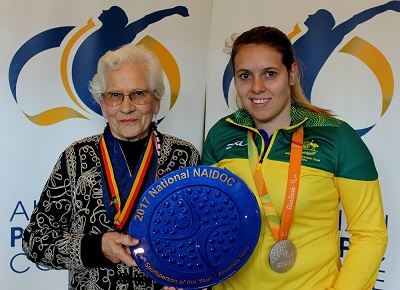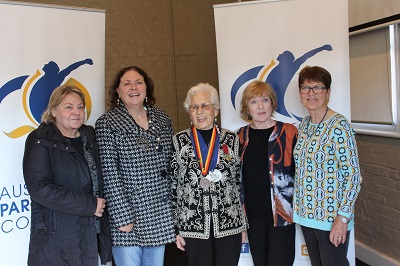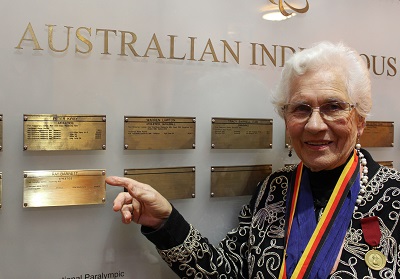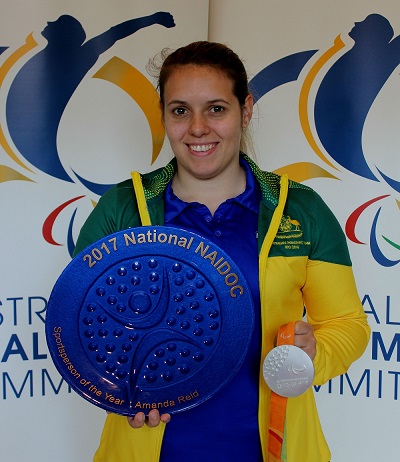NAIDOC National Sportsperson of the Year and two-time Paralympian, Amanda Reid was a special guest at the NCIE when a new plaque was unveiled – and existing ones updated – on the NCIE’s Indigenous Paralympian honour board.
The celebration, held during NAIDOC Week 2017, acknowledged the exceptional achievements of the two Indigenous athletes who represented Australia at the Rio 2016 Paralympic Games, Amanda Reid (cycling) and track and field athlete Torita Blake.

Photo: Barbara Evans and Paralympian Amanda Reid
It also honoured 1972 Paralympian Ray Barrett, whose Indigenous heritage was recently rediscovered through the APC’s Paralympic History Project. Ray was a gifted sportsperson and won Bronze in the 100 metre Wheelchair Sprint at the 1972 Paralympic Games in Heidelberg.
He was the second Indigenous Paralympian to compete for Australia after the legendary wheelchair basketballer, Kevin Coombs OAM.
Ray’s mother Barbara Evans and four of her nieces (Ray’s cousins) were at the NCIE for the addition of Ray’s plaque to the Honour Board.

Photo: Barrett family (L – R): Jill Kite, Toni Stepniac, Barbara Evans, Jan Funnell, Christine Murphy
Rio Chef de Mission Kate McLoughlin told Barbara her son was now officially part of Paralympic history.
“We are honoured to be in your presence and we are proud to be able to share his story and his legacy with Australians for many, many more years to come,” she said.

Barbara Evans pointing out Ray’s plaque on the Honour Board
Scott Avery from the First Peoples’ Disability Network paid tribute to all the Paralympians
“We see excellence so broadly in our community and it’s such a rare opportunity we get to celebrate it. What we see here today is manifestation that sporting excellence is the foundation for excellence in many other parts of life,” he said.
“NCIE has become something of an institution in our community in acknowledging what is good about our people.”
The Indigenous Paralympian honour board was first unveiled at the NCIE in December 2015 as a joint project of The First Peoples’ Disability Network, the Australian Paralympic Committee, Aboriginal Disability Network NSW, Outback Academy and Red Dust Heelers.


